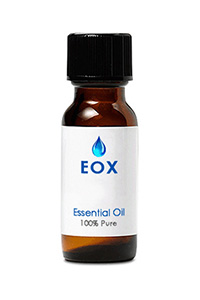New ArrivalsGift Ideas Specials Contact Us

WINTER 5% OFF SALE!
SITEWIDE05
Simply enter the above coupon code and save 5% on your ENTIRE ORDER!
Use PayPal, cash, or checks! NO LIMIT!

Now In: CATEGORIES → Essential Oils → 15ml Bottles → Essential Oil - Ginger
Botanical name: Zingiber officinale Color: Very light amber Consistency: Medium-thin Perfumery note: Top/middle Related Planets/Deities: Mars/Aries Aroma: Present, strong-smelling, spicy, complex, slightly woody with a hint of nuttiness Energetic Properties: Radiant, warm, earthy, sexual. Aromatherapy Properties: A pale yellow, amber or greenish liquid with a warm, slightly green, fresh, woody-spicy, sometimes nutty, scent. It blends well with sandalwood, vetiver, patchouli, frankincense, rosewood, cedarwood, coriander seed, rose, lime, neroli, orange and other citrus oils. Spiritual Uses: Ginger has a long history of use in spiritual and magickal applications. It is often used for its potency in areas of love and sexuality. Ginger has traditionally been associated with prosperity, and is one of the most oft-used plants for money charms. Blends well with: As a potent, strong-smelling oil, Ginger can easily overpower other essential oils. It blends nicely with other citrus oils for a warming, uplifting blend. Also mixes well with Sandalwood, Neroli, Rosewood, Frankincense, or Ylang Ylang for a energizing yet contemplative blend. History: With a long and storied history, Ginger is one of the most widely-known, and highly regarded plants in the world. Because it isn’t found in the wild, Ginger’s exact origin is uncertain, although its use in cooking and medicine likely predates historical records. It is mentioned in the Mahabharata, the epic Hindu work written around 4,000 BCE, and was revered in both Chinese herbal and Ayurvedic medicine. Confucius himself once wrote that he never ate a meal without Ginger. After the fall of the Roman Empire, Ginger nearly vanished from Europe; its presence in the West was revived after Marco Polo’s visit to the Far East. It quickly became a very coveted -- and expensive -- ingredient and medicinal herb. Most Ginger is now grown in Jamaica, followed by India and China. |
|
|||||||
|
|||||||





